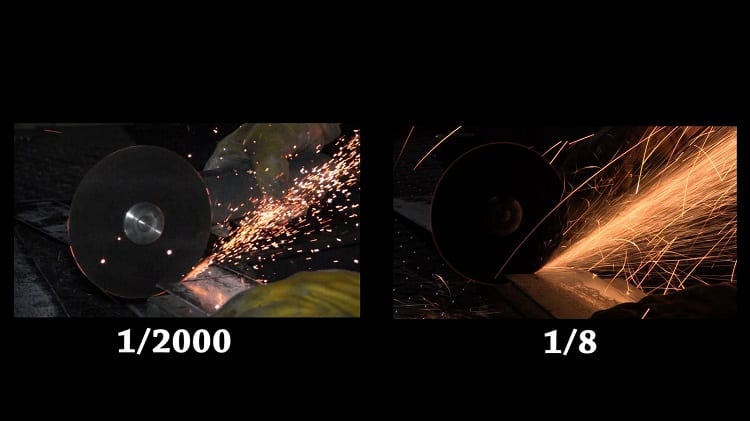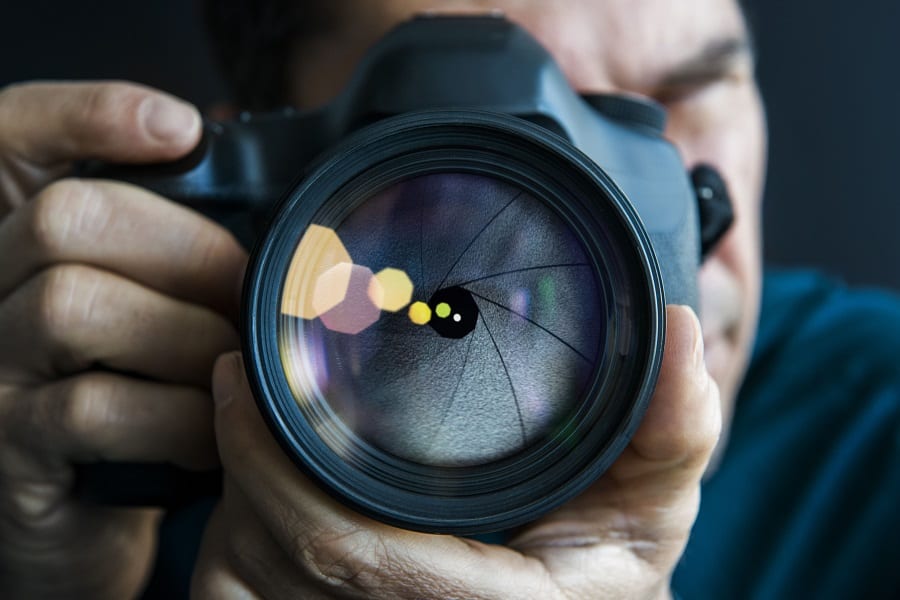You have excellent focal length and a wide aperture, but what about shutter speed?
Shutter speed is one of the most important factors to consider when you want to take pictures of celestial objects.
What does shutter speed achieve?
Shutter speed can do two important things: it tweaks the image brightness and can also create dramatic effects. It does this by blurring the motion in the picture or freezing it.
Shutter speed refers to the amount of time that your camera shutter remains open so that light can be transmitted to the camera’s sensor.
There are different effects that will be produced depending on whether you have a shorter or longer shutter speed. Here’s what you need to know about shutter speed.
Contents
Shutter Speed: Is Slow Or Fast Better?
A longer, or slower, shutter speed will expose your sensor and this will create motion blur. Subjects that move in your image will look blurred along the direction of the motion.
Slow shutter speeds are usually used to take photos of objects at night or when there’s poor visibility.
It’s therefore appropriate for astrophotography. When it comes to exposure, slow shutter speed pictures will ensure that your camera collects enough light and this will make your images brighter.
A fast shutter speed can remove motion so that you can make it look like it’s frozen in time.
An example is if you take a picture of rain. With a faster shutter speed, it will look like the drops have frozen in the air. When it comes to exposure, a smaller amount of light will enter the camera sensor and this will make the photo darker.
How To Calculate Your Shutter Speed
You measure shutter speed in fractions of a second. For example, 1/4th means a quarter of a second.
Many mirrorless and DSLR cameras can have shutter speeds that go all the way up to 1/4000th of a second. You’ll find that the longest shutter speed on those cameras will be around 30 seconds, as Photography Life reports.
Most shutter speeds are fractions of a second, but sometimes your camera might omit the fraction.
So, 1/500th of a second would be written as 500. But, if the shutter speed isn’t written as a fraction because it’s longer than a second, then it will be written with a quote mark, like “5” to mean that the camera has a five-second shutter speed, as Creative Live reports.
Mechanical Vs. Electronic Shutter: Which One Is Best?
A mechanical shutter is a physical piece that moves inside the camera, while electronic shutters are found on smartphone cameras.
These don’t have an actual physical barrier in the same way that mechanical shutters do – they make use of an electrical surge that notifies the sensor to be engaged, as Creative Live reports.
If you’re using electronic shutters, the benefit is that you can shoot at faster speeds.
Their drawback is that they can decrease the quality of your photo, such as by creating noise in the picture. If you’re using shutter speed for astrophotography, an electric shutter can battle with long exposures because they drain the battery of the camera.
Other Factors To Consider
It’s not just your camera’s shutter speed that’s important. You need to take other factors into consideration as they are connected. These include:
Focal Length
What is the focal length of the lens you’re using?
If you have a lens with a longer focal length, this will boost the camera shake that occurs so a faster shutter speed is recommended. A good tip is to go for a shutter speed with a denominator that’s larger than the lens’s focal length, Creative Live reports.
ISO
ISO is how sensitive the sensor of the camera is to light. The higher the number, such as 400 or 800, the more the sensor will be sensitive. A standard number for ISO is 100, but if you’re taking pictures at night, such as of the sky, then you’ll want a higher number.
Aperture
This is the lens opening. When you press the shutter release button, a hole will open so that the image can be taken – that hole is the aperture. If it’s larger it will take in more light.
What Different Shutter Speeds Look Like

If you’ve never experimented with shutter speed, you might be curious to know what different shutter speeds will look like. Here are some examples.
- 1/1000 of a second: If you want to take pictures of fast-moving objects, this will freeze them.
- 1/250 of a second: this shutter speed will help you to freeze a still subject.
- 1/60 of a second: this speed works well with panning photography in low visibility.
- 1/15 of a second: this shutter speed will allow you to capture a bit of movement from subjects that are moving, such as people who are walking.
- 1/8 of a second: this speed captures motion blur when the subject is in water.
- 1/ 4 of a second: this creates blurred movement, but it isn’t too little blurriness that it seems like it happened by accident or as a photo faux pas.
- 1/ 2 of a second: this speed creates a lot of blurriness.
- Over 1 second: this is a good shutting speed to use for night photography.
- Bulb mode: this is shutter speed that’s used for exposures that last longer than 30 seconds. You’ll manually control the exposure time. This is also what you want to use for astrophotography.
What Settings To Use For Astrophotography
Let’s look at what shutter speed, and other settings, you should use for taking pictures of astronomy.
Use A Wide Aperture
Earlier we talked about the importance of pairing a wide aperture with shutter speed, and aperture is really vital for astrophotography. This is to bring in as much light as possible because you’re taking photos of the dark sky. Aim for an aperture that’s f/2.8 or wider.
Make Use Of Longer Shutter Speeds
Wide apertures and long shutter speeds will work a dream! You want to aim for a shutter speed that’s at least 30 seconds to produce quality shots.
Set Your ISO On High
You want to make sure that you have high ISO levels if you’re taking deep-sky photos. An ISO of around 800 will bring the moon and stars to life in long-exposure shots.
Make Use Of Bulb Mode
On some cameras you can’t manually adjust shutter speed beyond 30 seconds. This is where Bulb Mode comes in because it allows you to use a longer exposure time, and this is a feature you’ll find on most mirrorless and DSLR cameras.
How Bulb Mode works is that when you engage the shutter button, the shutter will stay on until you remove your finger from the button.
It’s not that practical, of course, and it can cause you to create shakiness, so using a remote control for your camera’s shutter release is a good idea.
There are different remote control methods you can use, such as by making use of a smartphone app to control the shutter on your phone remotely or by engaging a physical device that connects your camera with the use of a cord.
Remember To Enjoy Trial And Error!

Although we’ve outlined some common shutter speeds and how they will affect your images, it’s actually best to experiment with different shutter speeds to see what effects they have.
When taking pictures of celestial objects, there sometimes feels like there’s more pressure to get that perfect image but you should try different things to see what you can produce.
As a good starting point, consider using 20 seconds of shutter speed for taking pictures of the stars, and about 15 to 20 seconds for galaxies. The same rule applies for taking pictures of the planets, such as Mars.
Try those as a starting point and remember to relax and have fun!
Related Questions
How can you find your camera’s shutter speed?
If your camera has a top panel, the shutter speed will be in the top left corner. If your camera doesn’t have an LCD panel, looking through the viewfinder will show you the shutter speed on the bottom left side. On mirrorless cameras, you’ll see it on the back screen.
How can you prevent camera shake?
Make sure you use shutter speeds that are faster than 1/60th of a second to prevent shaking. If that’s not possible, invest in a tripod to keep your camera stable.
Conclusion
Shutter speed is an important part of taking good photos of celestial bodies, so you need to ensure that you pay more attention to it, while also combining it with other important features, such as ISO and aperture, to take your photos to a much more professional level.


